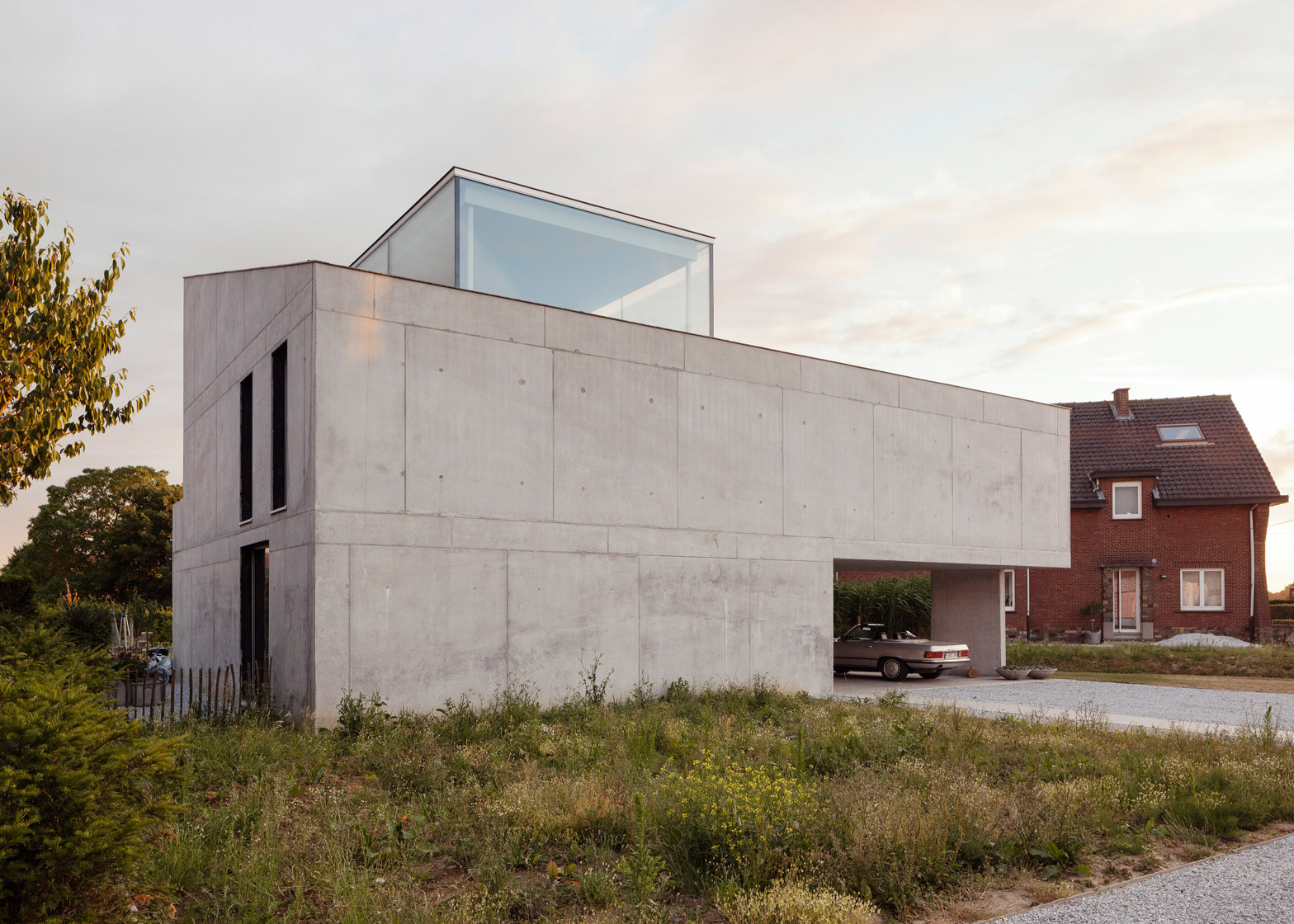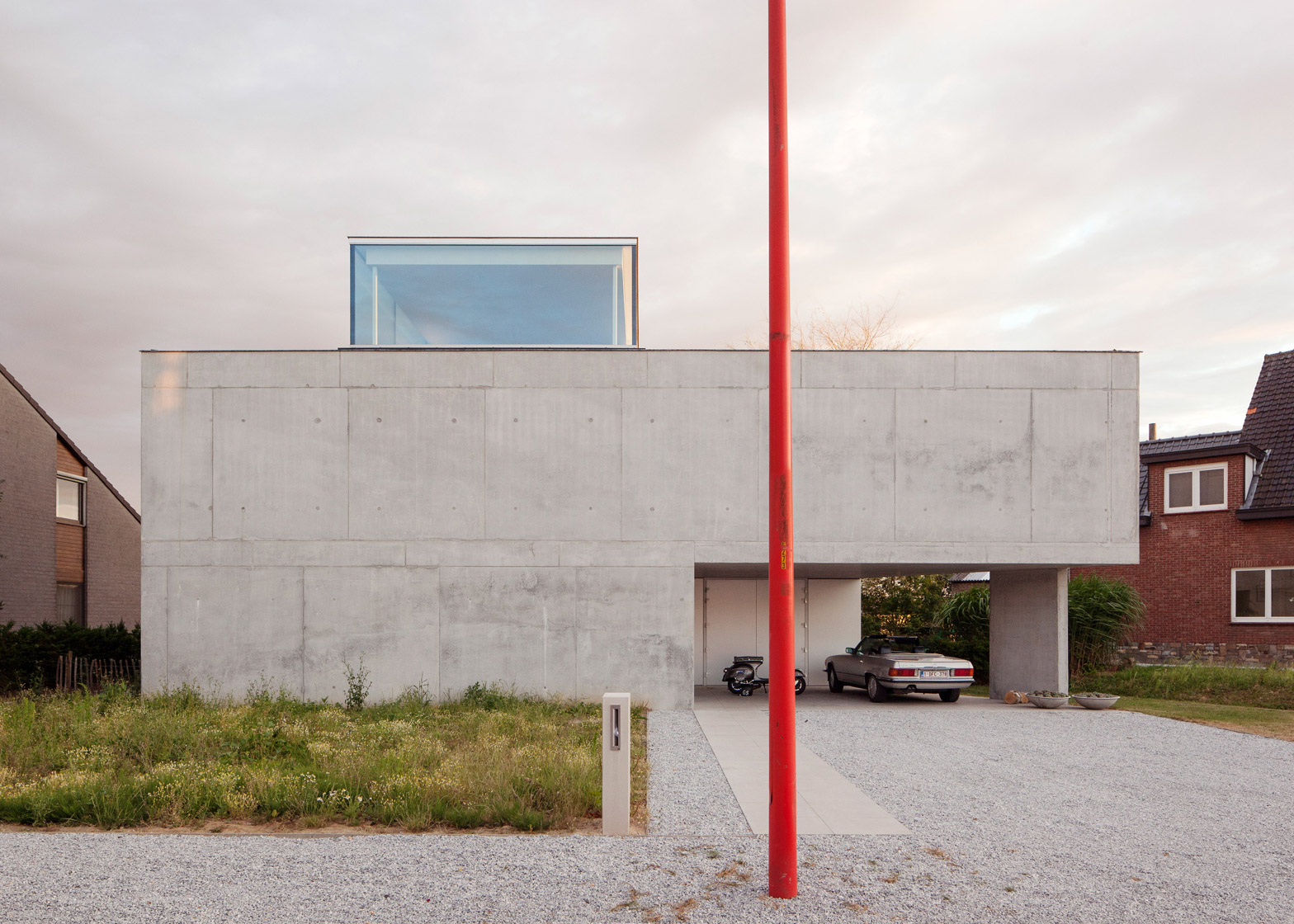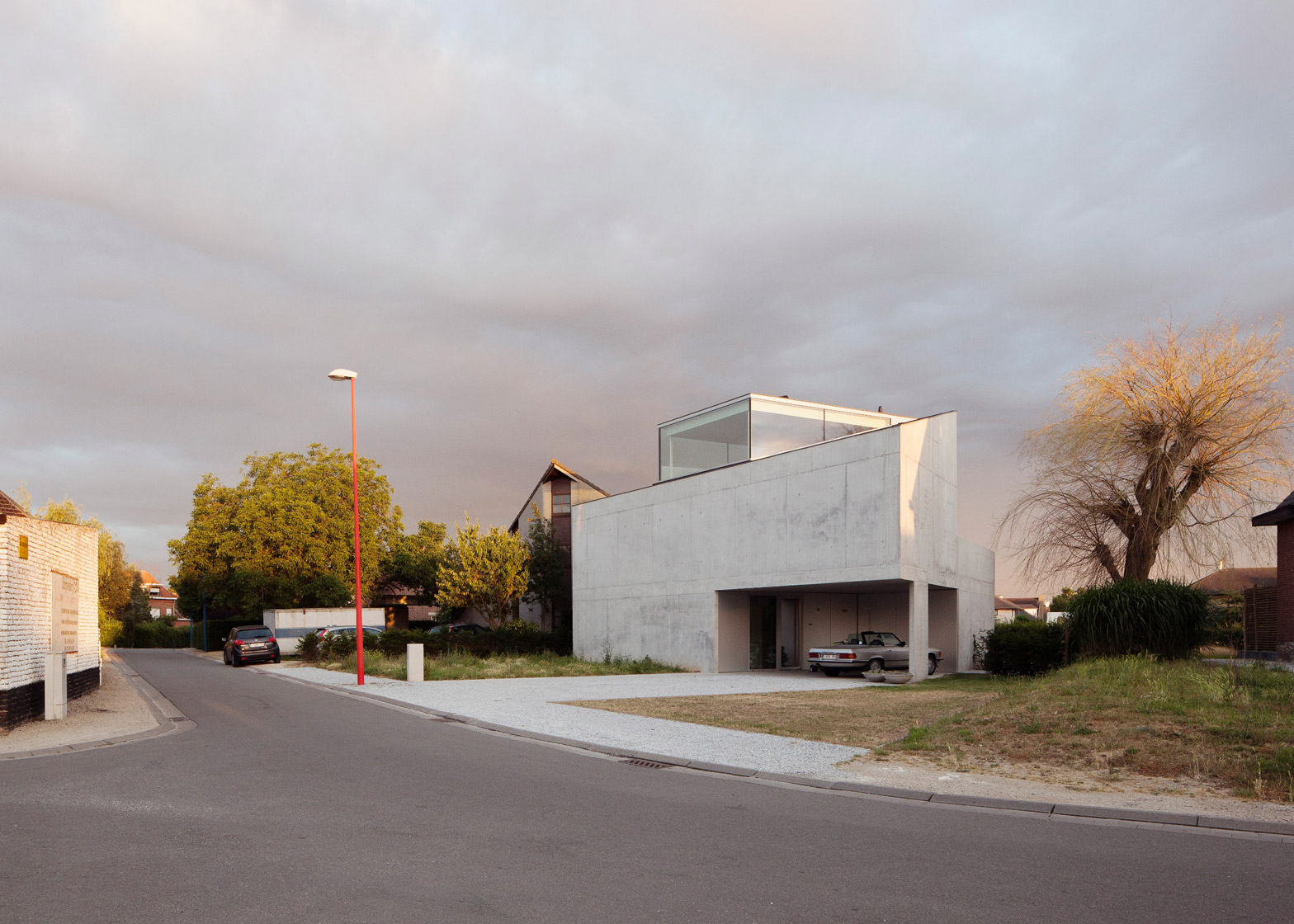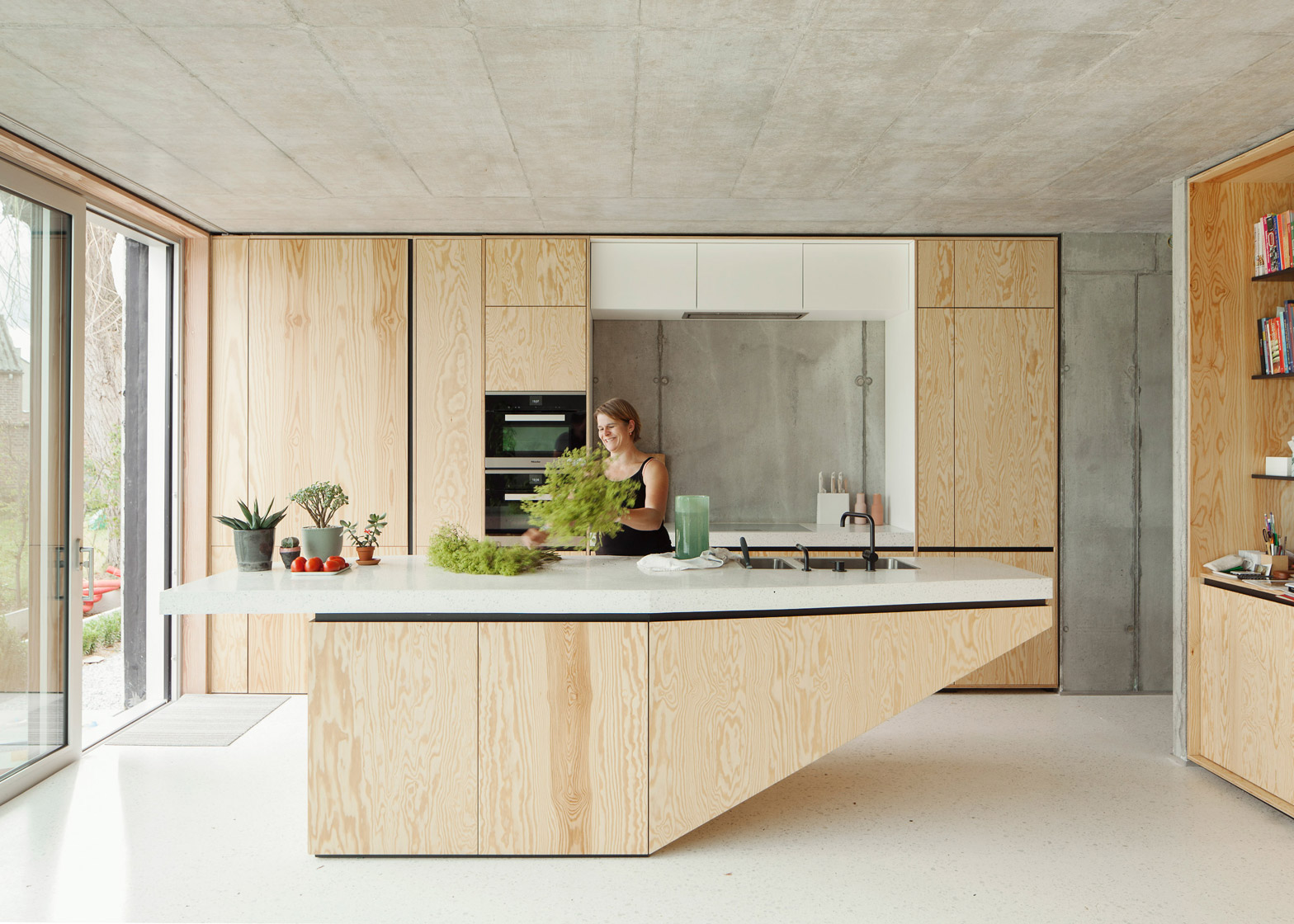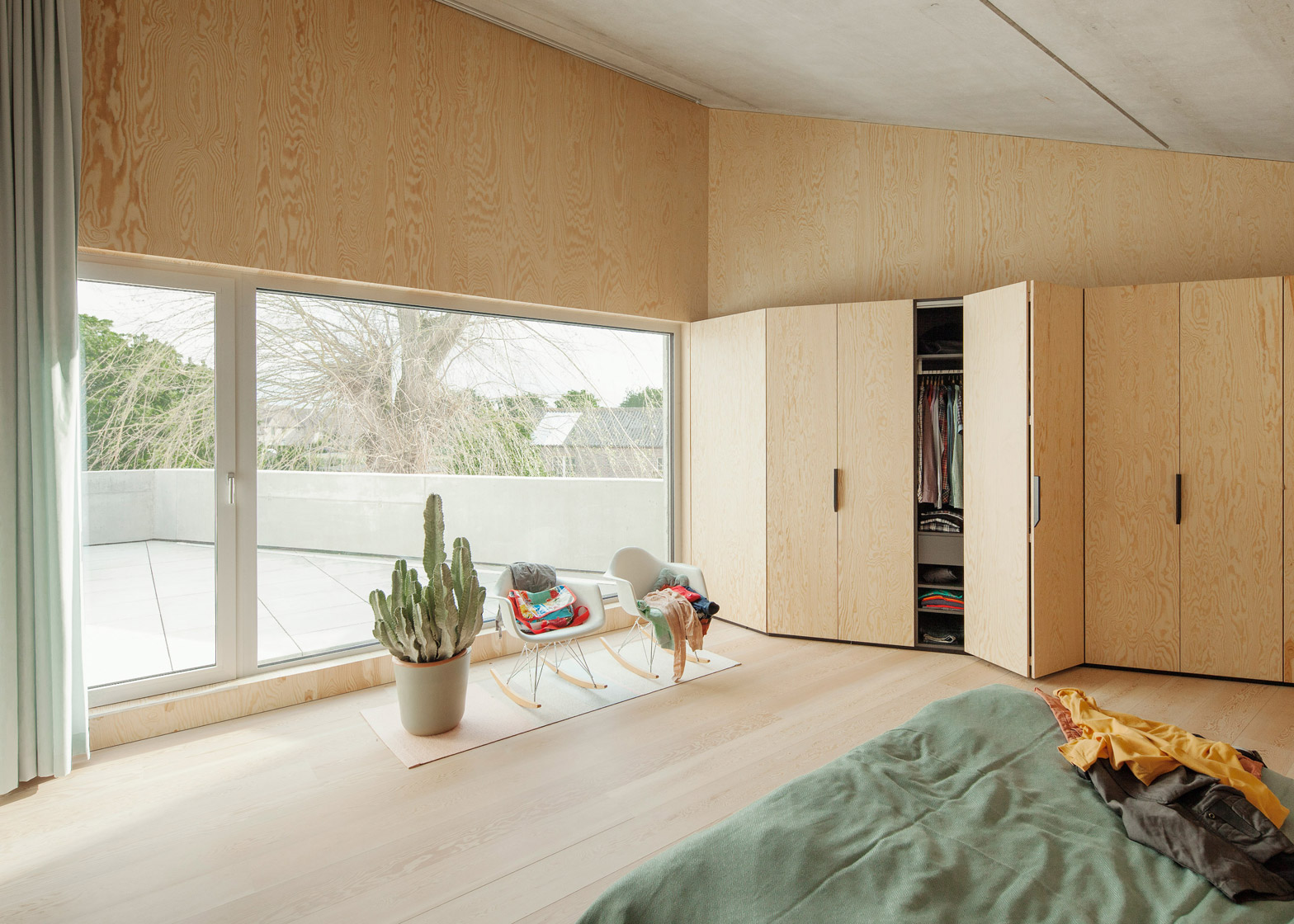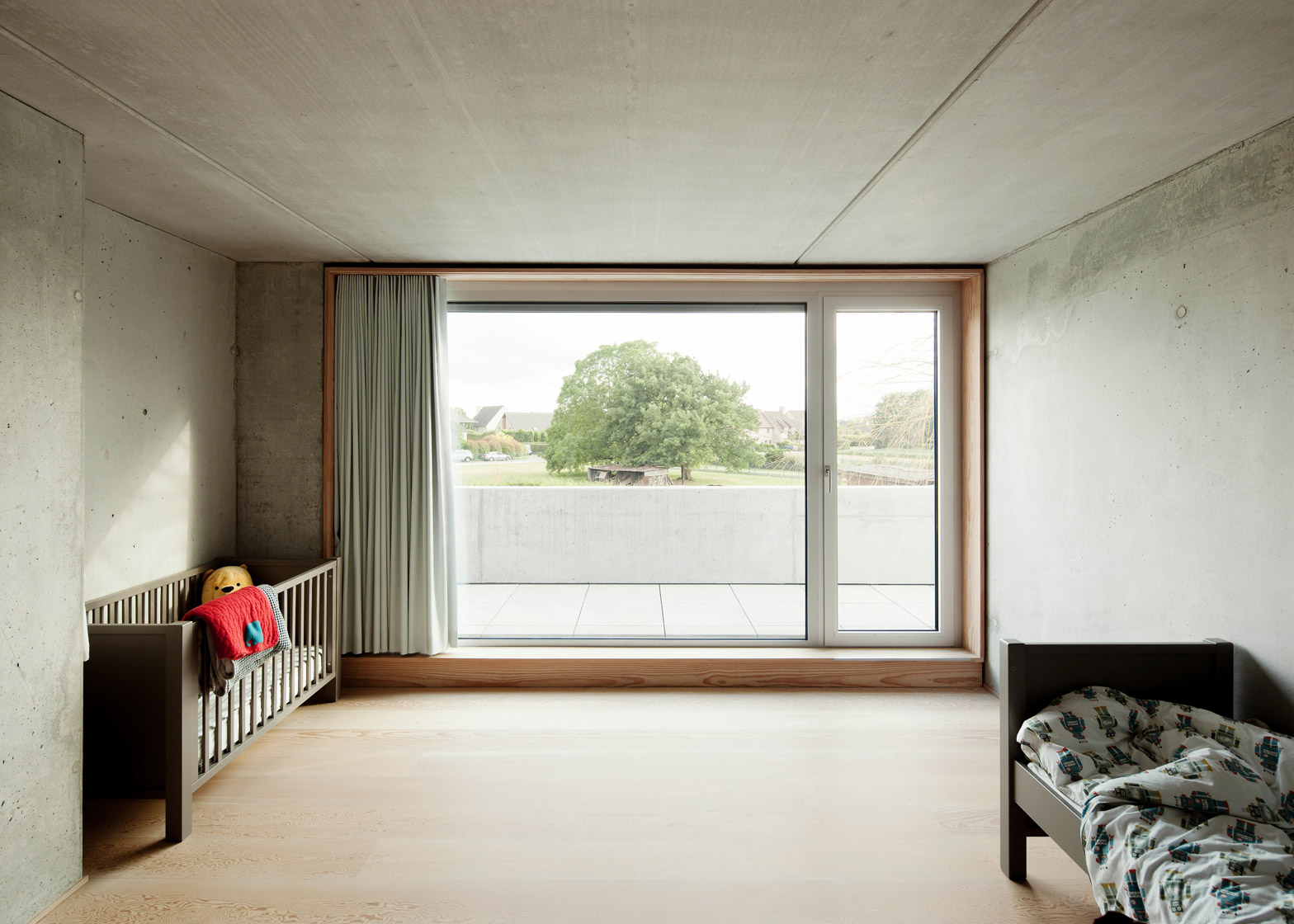A glass study projects from the roof of this concrete house near Brussels, but it presents an austere windowless facade to the street (+ slideshow).
Koen Pauwels and Wim Van Der Vurst of Antwerp-based ISM Architecten designed the property for a young couple with two children, who had purchased an oddly shaped plot in a residential area called Grimbergen.
From the street, TDH House appears as a monolithic concrete volume with an angular form that follows the outline of the plot. One corner is removed to create a sheltered parking area and entrance.
The client is a contractor who wanted to carry out much of the construction work himself, so concrete was specified as the main building material during the early stages of the project.
The plain in-situ concrete surfaces form a protective shell around the interior spaces, except where a glass box emerges from the sloping roof to provide views out from the upper floor.
"Originally conceived as a playroom for the kids, the glass box is now predominantly used as an office or guest room," architect Koen Pauwels told Dezeen. "It forms a nice counterpoint to the closed concrete box."
"Due to its height and the orientation we were able to open it up completely with glass without the risk of overheating."
Storage, staircases and a bathroom are accommodated along the building's solid edge, while openings in the other elevations are carefully positioned to make the most of the available light and views.
Most of the house's windows are incorporated into the rear elevation, where a large aperture that extends almost the full width of the ground floor features doors that open onto a garden terrace.
On the first floor, glazed doors set into large windows connect two bedrooms with a large shared balcony.
A master bedroom at the front of the house also opens onto a section of the balcony that extends along the property's slanted edge.
According to the architects, the ground-floor plan is representative of the client's request for a combination of open and more private spaces that serve different purposes.
The separation of the main living area from a dedicated television-viewing room is in keeping with an emerging trend for homes that reject entirely open-plan layouts in favour of more secluded spaces.
"As they have a lot of people coming over, they wanted an open plan with only a few sliding doors," Pauwel explained. "The TV area is a separated room as they didn't want a television in the living room."
Natural materials are used throughout the interior to create a warm complement to the raw concrete surfaces that feature both outside and inside.
"As the concrete was a given [in the project's brief], our main challenge was to complement its greyness in the choice of the interior finishings," Pauwel added.
Wood is applied as flooring, window surrounds and for fitted cabinetry, including the kitchen units and a freestanding unit topped with work surfaces and sinks.
Other concrete residences on Dezeen include a property in Tokyo with a similar cutaway corner for parking cars and a house in Marseille with an angular window projecting from its board-marked facade.
Photography is by Luis Díaz Díaz.


